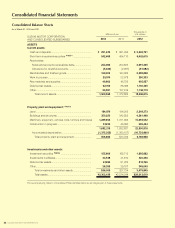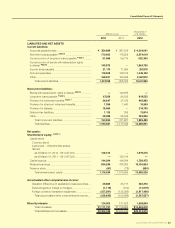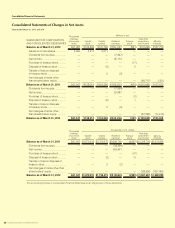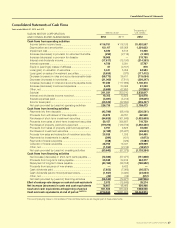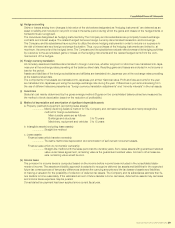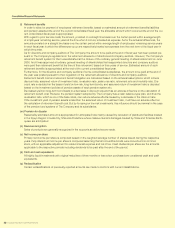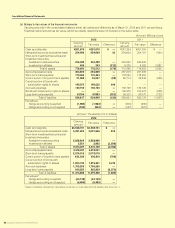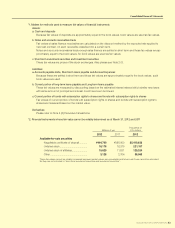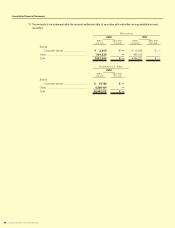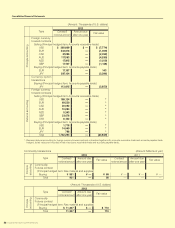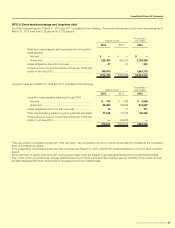Suzuki 2012 Annual Report Download - page 43
Download and view the complete annual report
Please find page 43 of the 2012 Suzuki annual report below. You can navigate through the pages in the report by either clicking on the pages listed below, or by using the keyword search tool below to find specific information within the annual report.
Consolidated Financial Statements
SUZUKI MOTOR CORPORATION 41
NOTE 3: Additional Information
Application of “accounting standard for accounting changes and error corrections” and related matters
As for accounting changes and error corrections from the beginning of the current consolidated fiscal year, the “accounting
standard for accounting changes and error corrections” (Accounting Standards Board of Japan; ASBJ Statement No.24 4
December 2009) and the “Guidance on accounting standard for accounting changes and error corrections” ASBJ Guidance
No.24 4 December 2009) have been applied.
NOTE 4: Financial Instruments
(a) Matters for conditions of financial instruments
a. Policy for financial instruments
As for the fund management, the Group uses short-term deposits and short-term investment securities, and as for
the fund-raising, the Group uses borrowings from financial institutions such as banks and issuance of bonds. The
Group uses derivatives to hedge and manage the risks of interest-rates and exchange-rates fluctuations, and does
not use derivatives for speculation purposes.
b. Type of financial instruments, risks and risk management
With respect to customers’ credit risks from operating receivables such as notes and accounts receivables-trade,
in order to mitigate the risks, the Group identifies credit standing of major counterparties and manages due date
and receivable balance of each counterparty in line with our rules and regulations for credit control. The Group
hedges risks of exchange-rate fluctuations from operating receivables denominated in foreign currency by forward
exchange contract in principle.
Investment securities are mainly stocks of companies with which the Group has business relationship, and as for
listed stocks, the Group quarterly identifies those fair values and reports them to the Board of Directors.
Most of accounts payable-trade are due within one year.
Applications of borrowings are fund for operating capital (mainly short-term) and capital expenditures (long-term),
and the Group uses interest-rate swaps for the interest rate risks of some long-term borrowings to fix interest ex-
penses.
Objectives of derivative transactions are foreign currency forward contracts to hedge the risks of exchange-rate
fluctuations related to receivables denominated in foreign currencies and interest rate swaps to hedge the risks of
interest-rates fluctuations related to borrowings. The Group executes and manages derivatives within the actual
demand in line with our rules and regulations which set out the authority to trade. In addition, in using derivatives,
the Group deals with financial institutions which have high credit grade in order to reduce credit risks. With respect
to hedge accounting, also please see Note 2 (g).
In addition, each of the Group company manages liquidity risk related to accounts payable and borrowings by
making a financial plan.
c. Supplement to fair values of financial instruments
Fair values of financial instruments include values based on quoted prices in active markets and values assessed
by rational valuation techniques in case quoted prices are not available. Because the rational valuation techniques
include variable factors, the results of valuation may differ when different assumption is applied.



